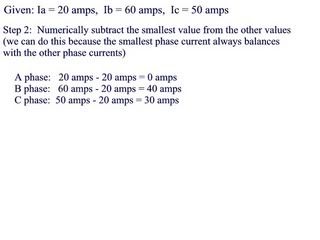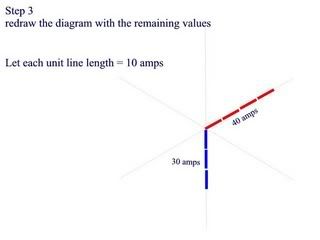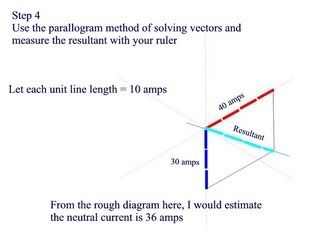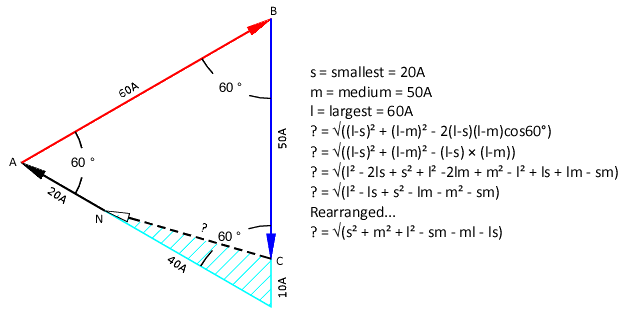Gary Shumaker
Member
I have been told that to calculate the amount of current on the neutral of a three phase system, you simply take the square root of the highest phase current. I have an extensive engineering backgrond and I know that this is not possible. For example, if phase A = 49A and phase B = 47A and phase C = 46A, there is no way to convince me that there is 7A on the neutral. Likewise, if phase A= 49A and phase B = 3A and phase C = 5A, again I am not convinced that there will still be 7A on the neutral. I suspect it is more simple than that and involves the application of the square root of 3 (1.732) based on the difference between phases.
What is the formula to calculate the neutral current on unballanced 3 phase circuits?
Thank you for your time
Gary Shumaker
Instructor ABC So. Cal.
What is the formula to calculate the neutral current on unballanced 3 phase circuits?
Thank you for your time
Gary Shumaker
Instructor ABC So. Cal.





